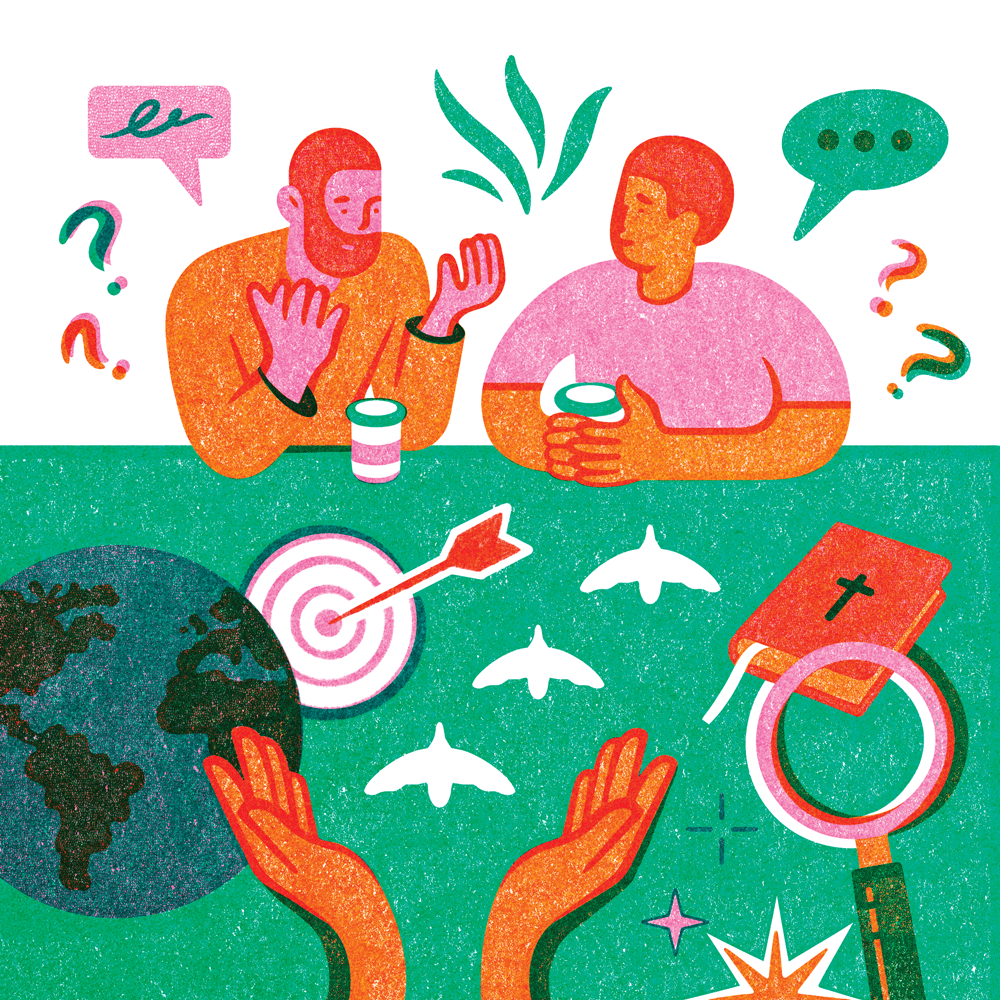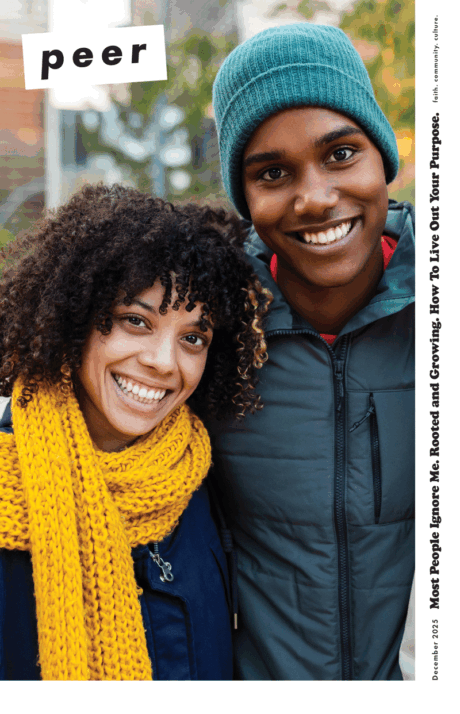
How to Manage the Negative Impact of Social Media
“This will be a long, evolving journey of figuring out what role you want social media in your lives.”Do you ever have that moment where you think to yourself, “Let me just go on this app for one second to send my friend a message?” And yet somehow, two hours go by and you suddenly forgot why you opened the app.
That used to be my job: to grab and hold your attention, take you out of your world and bring you into mine. I was working for a social media company where investors told us if we could hold your attention for two minutes or longer, we’d have a valuable company. So much thought went into:
Which friends’ posts and stories should show up in your feed first and second?
How many notifications can we send you per day without you turning them off?
If we automatically play the next video instead of making you click to start it, then we get about 10 percent more attention, let’s do that!
Where EXACTLY should each word button and image be to keep you sharing, liking and scrolling?
And on and on and on. There is so much thought that goes into every single pixel on every single screen of your social media apps. However, the people building these apps aren’t really thinking about your wellbeing, but rather thinking about what works to keep you coming back day after day, hour after hour and sadly, this seems to have negative consequences on your mental health.
Let me give you an example: “@name has tagged you in a photo/video.”
We’re so used to this in today’s world, but if we really zoom out for a second, what is happening here? We’re saying, “Someone you know has taken a picture of you, or said something about you, and shared it with hundreds or thousands of people. Do you want to see that photo? 😉
As human beings, we tend to care what others think; it’s the work of a lifetime to truly live the way we feel deeply called to, to be internally motivated and not let motivations from the outside rule our behaviors. Social media makes this extremely difficult.
Technology is amazing, and we’re lucky to have it. We can communicate across oceans and have every song ever made in our pockets and even consume hilarious, inspiring or truly life-changing content on these social media apps. But unfortunately, they’re delivered to us in these slot-machine-like feeds, that if we’re not careful, tend to leave us feeling drained and badly about ourselves.
The golden question is, can we get the parts of these apps that we love without all the anxiety, depression, self-comparison and distraction? The short answer: I don’t think so, but I do think we can take steps that help manage the negative impact.
1. Intention
Why did I just click that little app icon? “I dunno, I wanna connect with friends.” Why did I REALLY click? “I guess because I was lonely or bored or sad and looking to distract myself.” Understanding the reasons why we’re using these apps is important, because if we go into them mindlessly, they can easily take over our lives and motivations. Intention also allows us to ask ourselves if this is the best way of fulfilling our present desire. If what I’m craving is time with friends, is scrolling on social media delivering that need? Or would another activity with a friend make me feel better? What are some of your favorite memories with friends or family members? With a dash of intention, can you recreate some of those activities? Social media may seem the easiest or most mindless activity, but it doesn’t mean it’s what you want to do in that moment. Being intentional allows us to get smarter with how we’re spending our time.
2. Get Specific
We lump a huge number of social media activities—making and posting videos, scrolling in a newsfeed, scrolling on a specific profile, exploring hashtags, adding filters, DM-ing—into one thing: “TikTok.”
We can do all these activities on TikTok, but getting specific allows us to hone in on what we really like or don’t like.
For example, there’s a big difference between making a dance video or comedy skit (incredibly creative acts) and posting that video (i.e., entering it into the self-comparison machine). We can share a piece of creativity in different ways. We could text it to an individual friend or a specific group of friends, we could keep it for ourselves, we could watch it with someone or we could post it online. Each of those tasks feels different, and because likes and views are so addictive, when we’re posting without thinking about it, it’s very common to start making content not because we want to, but because we’re craving the likes/attention. Do you know someone who might be only going somewhere or hanging out with certain people, not because they like them, but because they want to be in pictures with them? Do you know someone who publishes popular posts out of a desire for social media fame? Have you ever deleted a post after the first few minutes because it didn’t get “enough” likes? If we’re not careful, these apps can make us do things that we don’t feel good about.
There’s also a big difference between visiting an individual’s profile and watching their videos and scrolling mindlessly in the News Feed or For You page. These main news feeds are very carefully designed, measuring everything you’ve ever clicked on, what you’ve hovered over and for how long. They are using that data to keep you on the app. YouTube is the same; 70 percent of all content watched on YouTube comes from recommendations and AutoPlay. That means 70 percent of all YouTube videos are not someone searching with intention but falling down the rabbit hole. My advice is to avoid News Feeds, and for the sake of your time and sanity, turn off YouTube Autoplay.
3. Train The Algorithm
If you’ve never tried deleting these apps from your phone, I recommend trying it. Use text/iMessage or Whatsapp with friends instead of Snapchat to see if you feel less anxious/depressed about life. You might love it, you might hate it, but you won’t know if you don’t try.
However, some people feel great about their social media use. Most teenagers and young adults with this mindset actively alter their settings and train their algorithms (liking and commenting on posts that they want to see more of, making an active effort to tell these algorithms, “No, I don’t want to follow more fitness models because they make me feel badly about my body, I want more _______.”). These people also tend to be unhesitant to unfollow profiles and block anyone who feels threatening/dangerous. Emily Weinstein writes about this in detail in her upcoming book, “Behind Their Screens.” Many also find it helpful to go into your settings and turn off all notifications.
Overall, this is HARD. It is not easy to have a healthy relationship with social media. The world got face smacked with this new technology that has taken over many elements of our lives. We’re still learning how to navigate that. Be gentle with yourselves; it’s OK to slip up. This will be a long, evolving journey of figuring out what role you want social media in your lives. I hope this article can help you think about it a little differently, start conversations with your friends and family about it and maybe try some new behaviors to see if they make you feel better about your life in and out of the digital world.
For further study
- Digital Wellbeing: Meaningful Daily Actions for Parents
- Digital Wellness: Meaningful Daily Actions For Students
Resources:
- We’ve Been Sneaking Into Your Brain: The True Impact of Social Media by Max Stossel
- Honest Stories From Students About Their Social Media: socialtruth.humanetech.com
- Social Media Dangers Documentary Childhood 2.0 by BARK
- Digital Minimalism by Cal Newport
- Behind Their Screens by Carrie James Emily
This article was originally titled “Beneath the Screen” in the October 2022 issue of Peer.

Max is an award-winning artist and the Youth & Education Advisor for the Center for Humane Technology, an organization of former tech insiders dedicated to realigning technology with humanity (as featured in The Social Dilemma). Before working with CHT, Max was a media strategist with an extensive background in social, running social media for multinational brands, and later working for a social media company where he designed some of the notification structures to distract people that he now raises awareness about.



